
When you head out to the garden this year to put those tomatoes in the ground, don’t forget your fish.
Believe it or not, fish and tomatoes go well together. And I don’t mean under the broiler. A fish head added to the hole before you plant your tomato can provide your plant with all the nutrients it needs for the entire season, leaving you with a bumper crop of tomatoes.
Let’s take a closer look at this age-old planting method and decide if it’s right for your garden today.
The Missing Link in the Three Sisters Planting Method
Many of you may be familiar with the Native American way of growing corn, beans, and squash called the three sisters method. These three crops are important to Native American culture, and by way of planting them together, all three plants played a role in the growth of one another. Indigenous peoples still use this method today, planting corn first, and then squash and beans at the base of the growing corn.
The corn supports the climbing beans, while the large squash leaves provide a living “mulch” to crowd out weeds and keep moisture in, all while the beans add nitrogen back into the soil.
However, when you read about this method these days, a key part of the equation is missing – the fish.
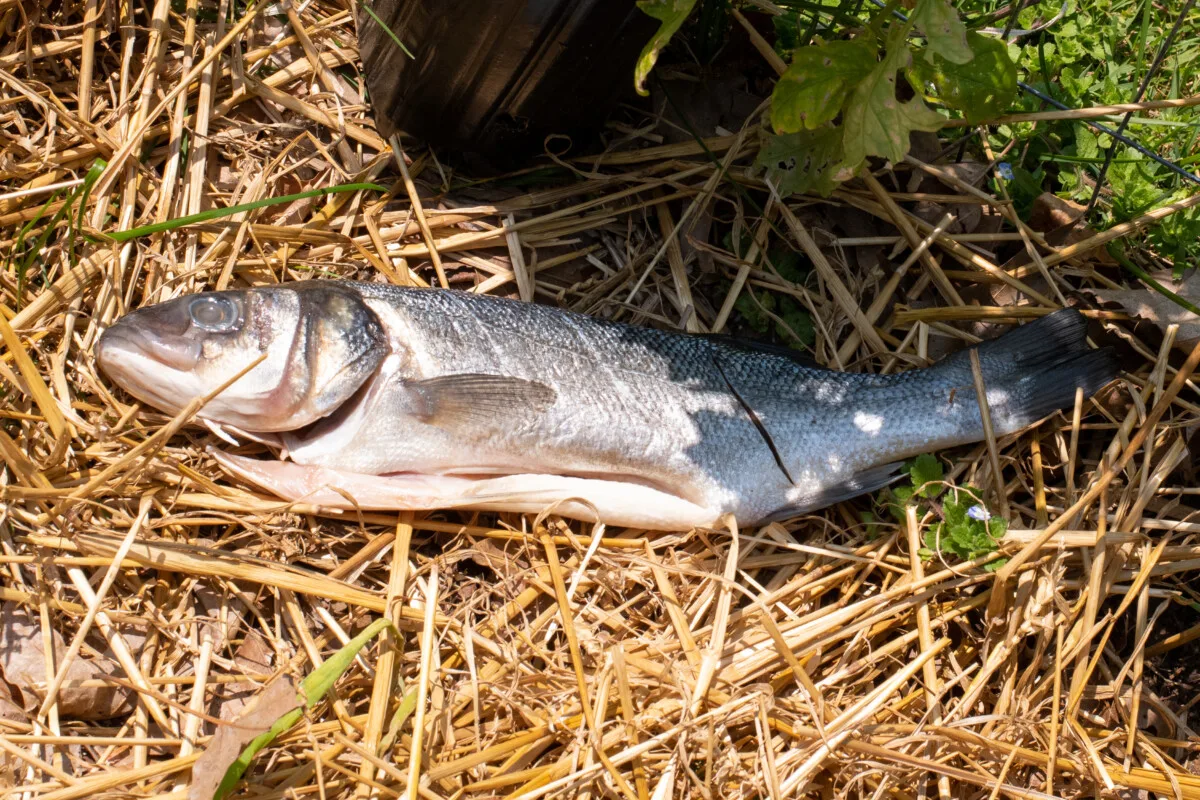
Everyone seems to forget the fish with the three sisters planting method.
Traditionally, a small fish is buried beneath the soil, with a bit more soil on top and then the kernel of corn. The fish slowly brakes down throughout the growing season, nourishing all three plants. It’s an integral step in this method that fertilizes the soil where each Three Sisters grouping is planted.
Somewhere along the line, we’ve mistakenly removed this important step. While many gardeners wax romantic about the Three Sisters growing method, they apparently don’t feel that a rotten fish fits today’s gardening narrative. But if you’re looking for an easy way to fertilize tomatoes that will give you a bumper crop of tasty red fruit, then it’s time to bring fish back to the garden.
Fish Fertilizer – What Makes It So Great
I’m a huge fan of fish fertilizer for my houseplants and my garden. It’s the complete package when it comes to feeding and adding nutrients back into the soil.
Most synthetic fertilizers are created to quickly add nutrients to the soil. They’re made so the specific nutrients in the formulation are immediately available to plants, which is great for your vegetables if those fertilizers actually reach the roots.
Unfortunately, most of the synthetic fertilizer we apply never reaches the roots and ends up as harmful runoff entering our waterways.
There’s a reason MiracleGro comes in that handy sprayer that easily attaches to your hose. To get enough nutrients to the roots where they can be used, you have to dump a lot of it on your plants.
And because these are harsh chemicals, accidentally using too much (remember that hose sprayer?) or applying them to tender seedlings or dry soil can cause fertilizer burn.
Now let’s look at fish fertilizer, be it the fish head Native Americans used or today’s commercially available fish emulsions.
Fish fertilizer breaks down differently in the soil. It must be “processed” by other living organisms in the soil to make the nutrients readily available to plants, things like earthworms, insects, mycorrhizae, and even the naturally present bacteria in the soil all break down the fish. All these microorganisms benefit from the fish fertilizer, meaning you’re doing more than just feeding a specific plant; you’re also improving the soil around it.
You’re feeding the soil, not just the plant, resulting in improved growing conditions that go beyond just one summer.
Fish fertilizer provides all three essential nutrients for plant growth – nitrogen, phosphorous and potassium. Because you’re using the whole fish, bones and all, you’re also slowly adding other important trace minerals important to plant health, such as calcium and magnesium.
Best of all, the nitrogen available in fish fertilizer is burn-free. So, you don’t have to worry about using it on tender seedlings, bare roots or during drought.
In essence, by adding a fish to the soil, you’re helping the entire microbiome beneath your feet, not just a single tomato plant. In turn, you’re improving your garden overall. And as we know, for the best gardens above ground, what’s below ground is the most important.
Tomatoes & Fish Fertilizer
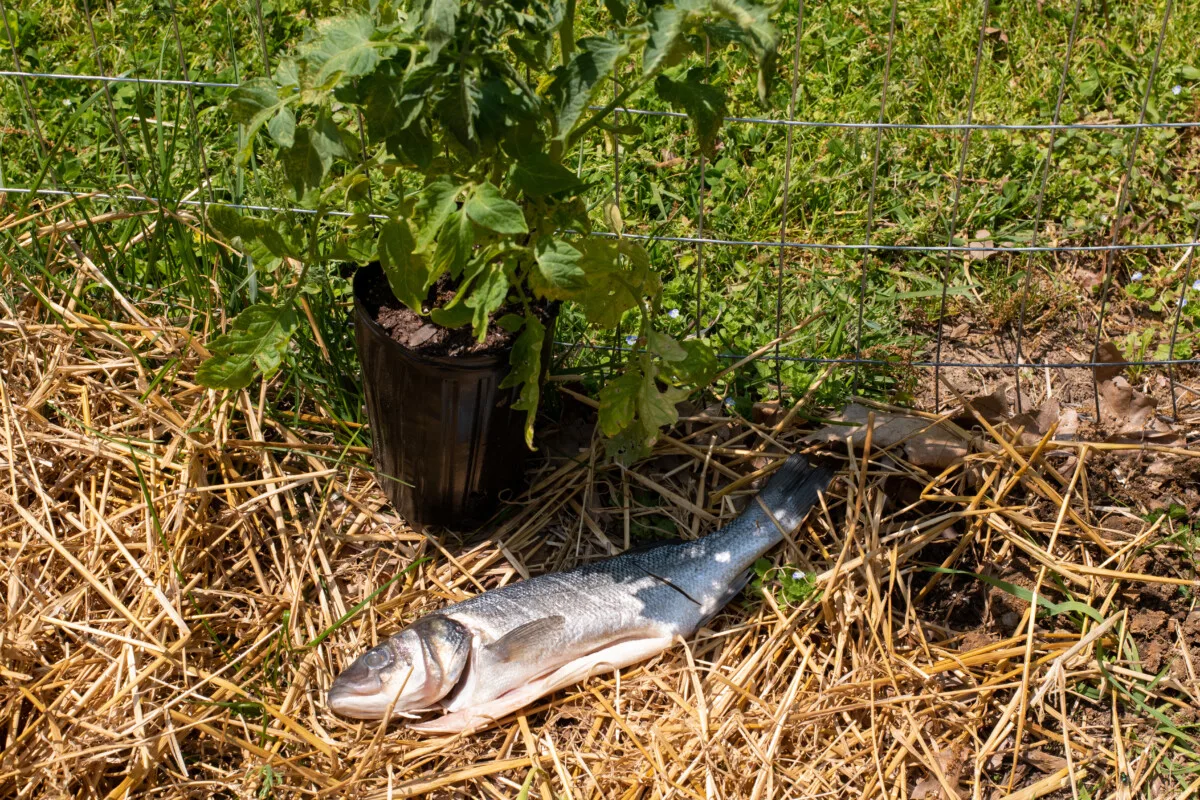
If you grow tomatoes, you already know they are the divas of the garden. They’re susceptible to just about every disease and pest under the sun. They don’t like getting their leaves wet. And you had better feed, feed, feed them.
Enter the fish head.
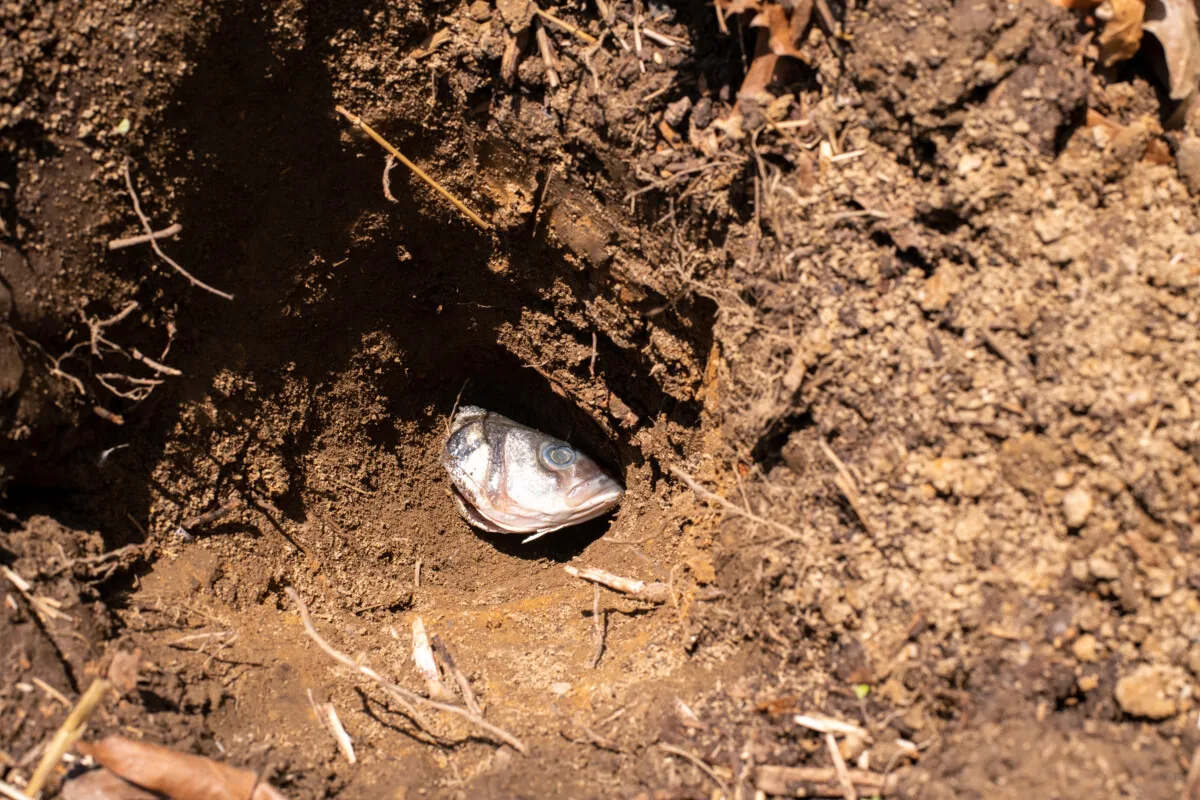
Or even an entire fish if you want. By burying a fish beneath your tomato at the beginning of the season, you are essentially “planting” a slow-release fertilizer that will continue to feed and nourish that plant (and the surrounding soil) for the whole season. No more guessing about what your tomatoes need at any given point in the summer; everything the plant needs is already at its roots.
Okay, Tracey, you’ve convinced me; let’s give this a go.
Sourcing Fish
Believe it or not, I had a little trouble finding a whole fish when I planted my tomatoes. And asking for just fish heads at the seafood counter in the supermarket garnered some interesting looks. Finding a reasonably priced whole fish was out of the question.
If you’ve got people in your life who fish, have them save the heads for you when they clean their fish. Keep them in a Ziploc bag in your freezer until planting time. (You’ll want to double bag them to lock in odors.)
But I did find one incredibly easy-to-find and inexpensive fish to add fish to your planting hole – tinned sardines.
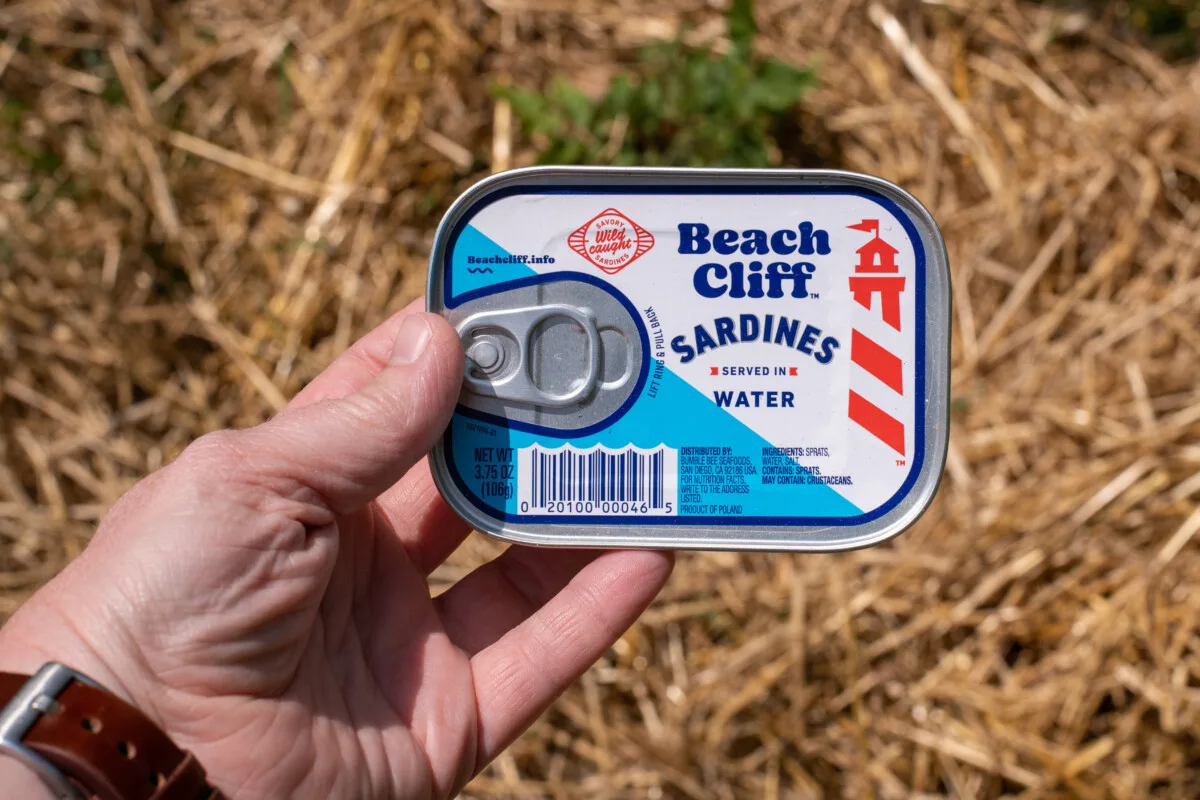
Use one tin per plant and opt for sardines packed in water. You don’t want the ones packed in oil, and you certainly don’t want the ones packed in Tobasco sauce. Unless you intend to have them for a snack later once your tomatoes are planted.
Sardines are easy to find at the supermarket and reasonably priced, making them a great option for planting fish with your tomatoes.
Critters & Planting Depth
Since you’re burying a tasty morsel in your garden, you’ll want to take precautions. You’ll need to bury the fish head (or fish) deep enough so the smell doesn’t attract the attention of any local wildlife or pets looking for a snack. (You probably don’t want to smell it either.) Finding a destroyed tomato plant and an empty hole in your garden is not the goal.
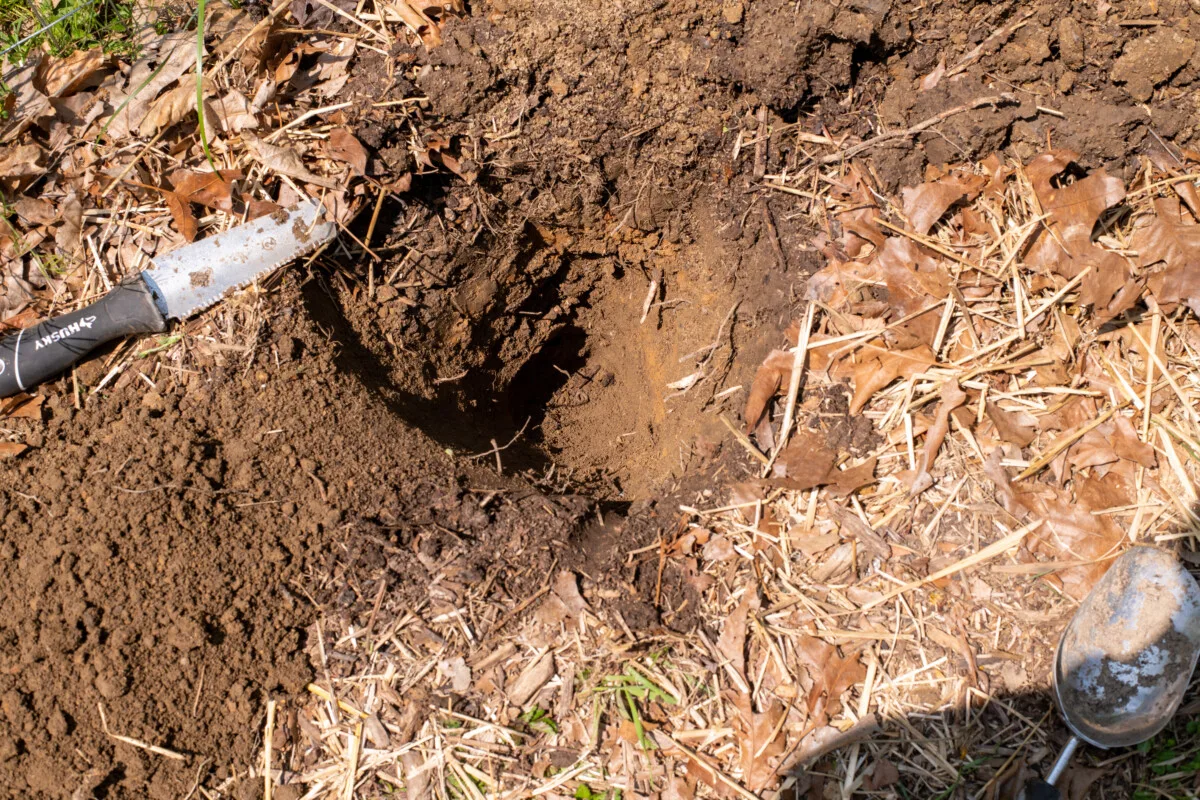
If you have a fenced-in garden, this is less of an issue. But otherwise, you’ll want to dig a hole between 1.5 to 2 feet deep. This puts the fish down far enough that it won’t make a stinky mess.
Oddly enough, this also creates the perfect growing conditions for your tomato plant.
By now, I’m sure you’ve read how tomatoes need to be planted either very deeply or sideways to encourage the growth of a large root system. Between the nutrient-dense fertilizer from the fish head and the depth you’re burying the tomatoes, you’re creating the perfect environment for monster tomato plants with lots of tomatoes.
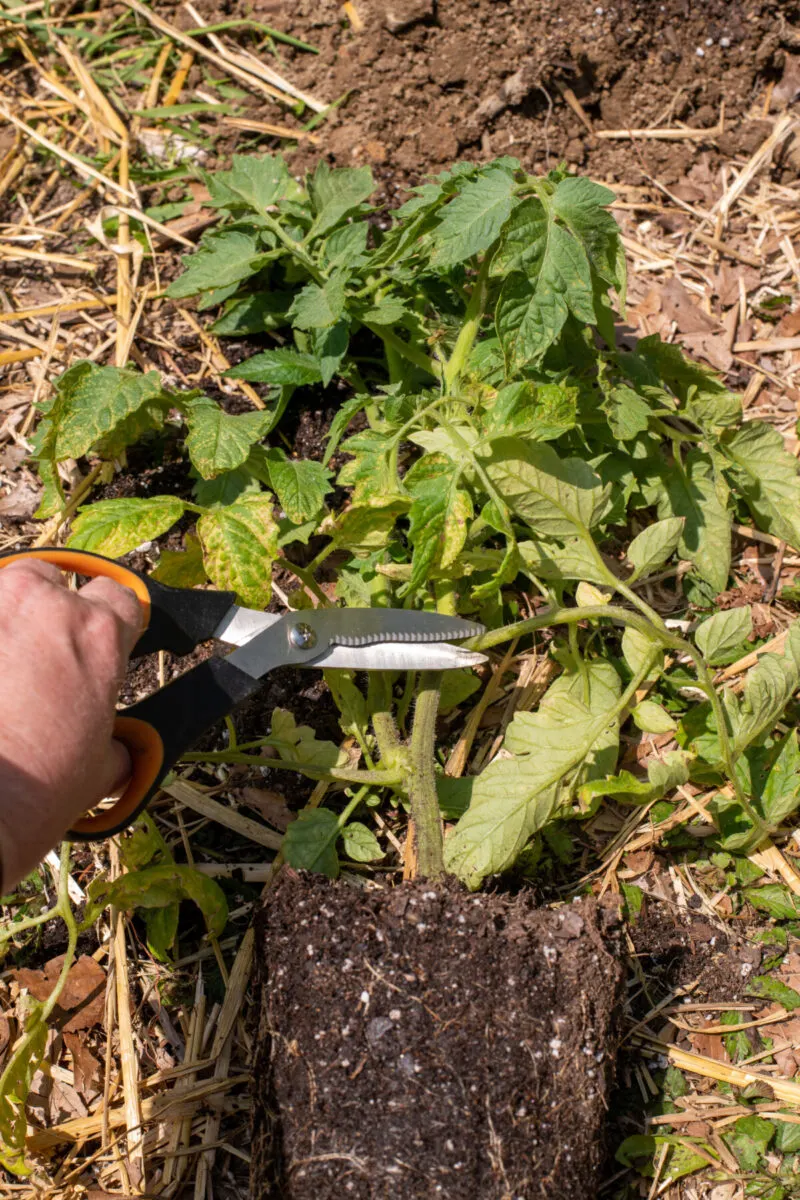
You can bury the tomato plant as it is or trim off any smaller stems growing off the main stem before burying the plant. In either case, the tomato will quickly put out new root growth all along the buried portion of the stem.
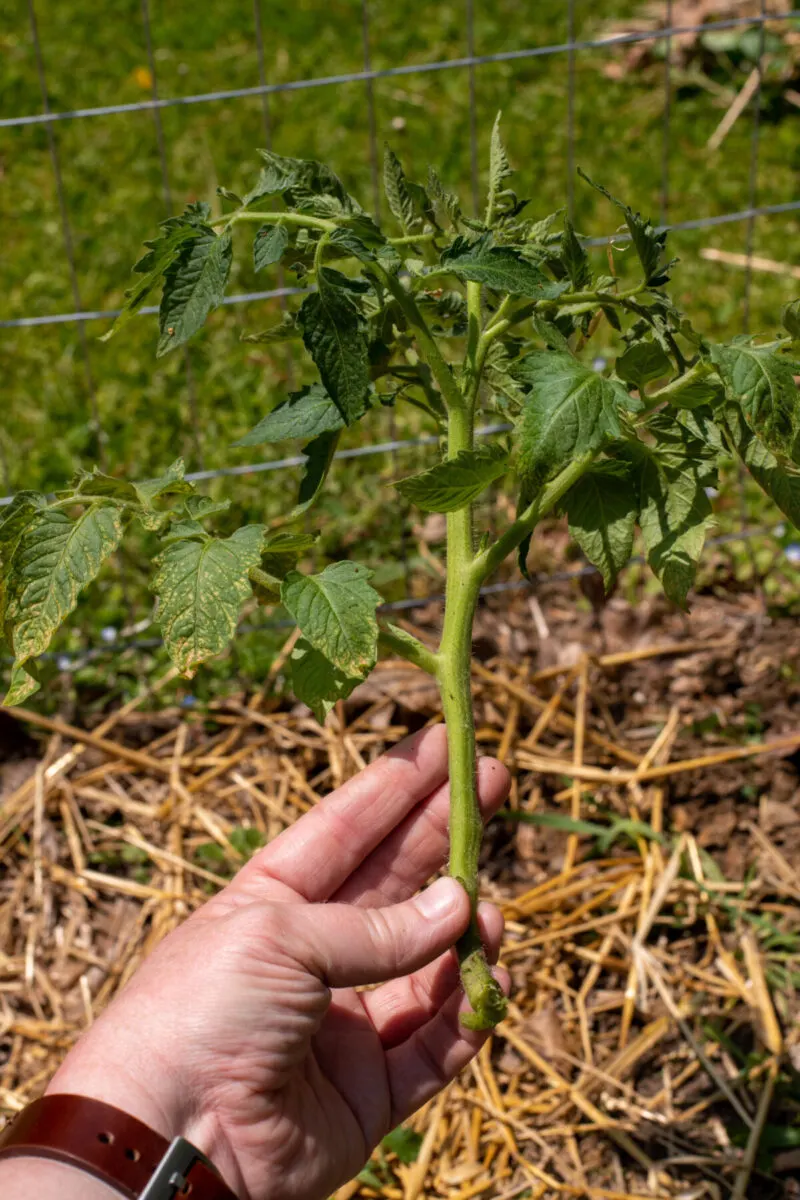
Bottoms Up
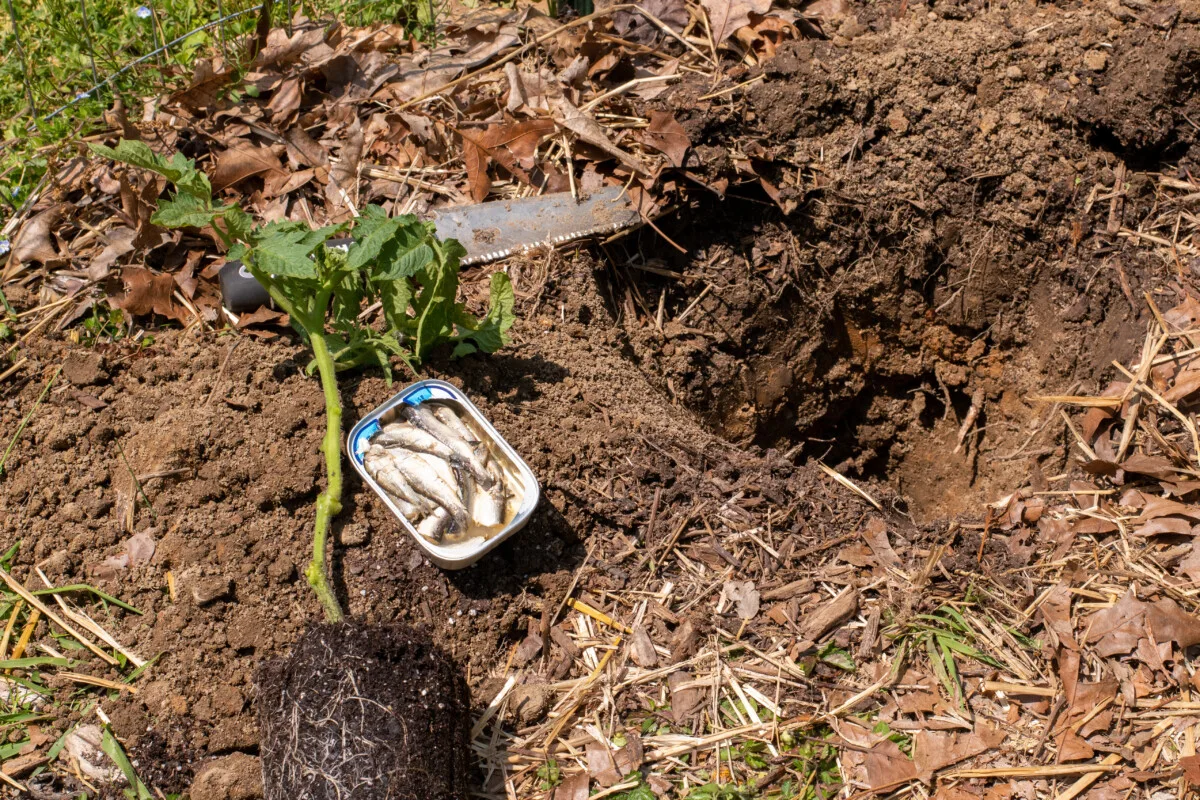
Place your fish head or fish in the hole and cover it with enough dirt so that when you place the tomato plant in the hole, 1/3 to ¼ of the plant will be above ground.
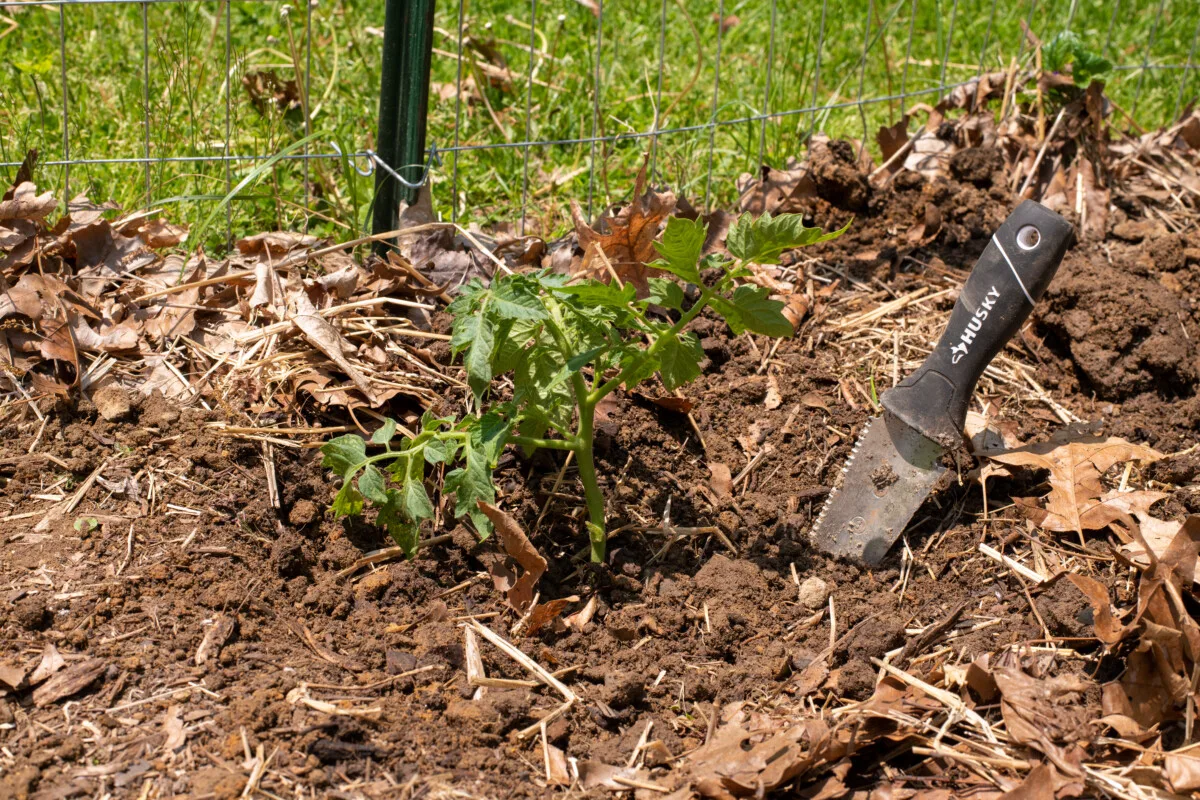
Gently fill the hole, firmly packing the dirt around the tomato.
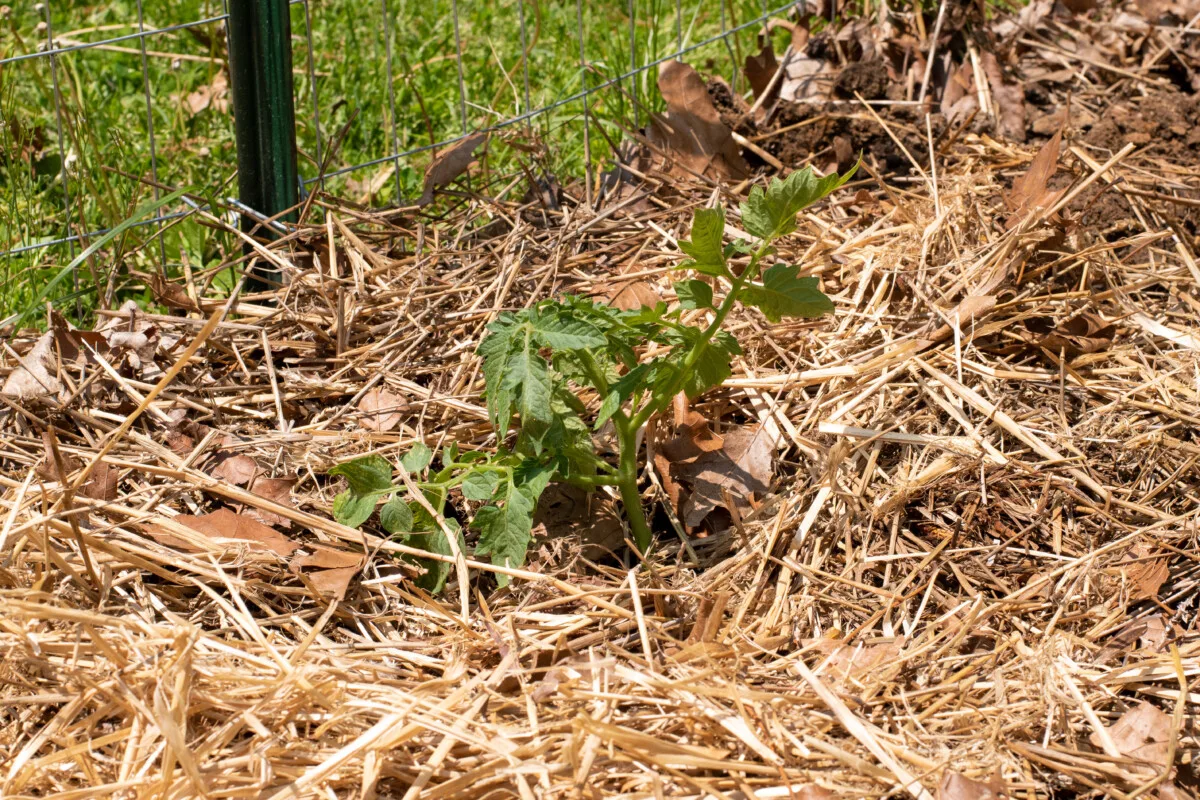
Water the tomato plant well and mulch around it to stop weeds and prevent moisture loss.
Don’t forget to fertile…oh wait, nope, that’s covered this year!
But I Already Planted My Tomatoes or I Really Don’t Want to Bury a Fish
If your tomatoes are already in the ground, or you really, really, really don’t want to bury a dead fish in your garden, you can still reap the benefits of using fish as fertilizer. There are numerous fish emulsions available today that carry all the benefits of using a whole fish.
These emulsions are made from scraps, carcasses, scales, bones, and whole fish that would otherwise go to waste, ending up being dumped in landfills. They are a great way to replenish your soil and feed your plants. Alaska and Neptune’s Harvest are two that I use. Both are easy to find in stores and online.
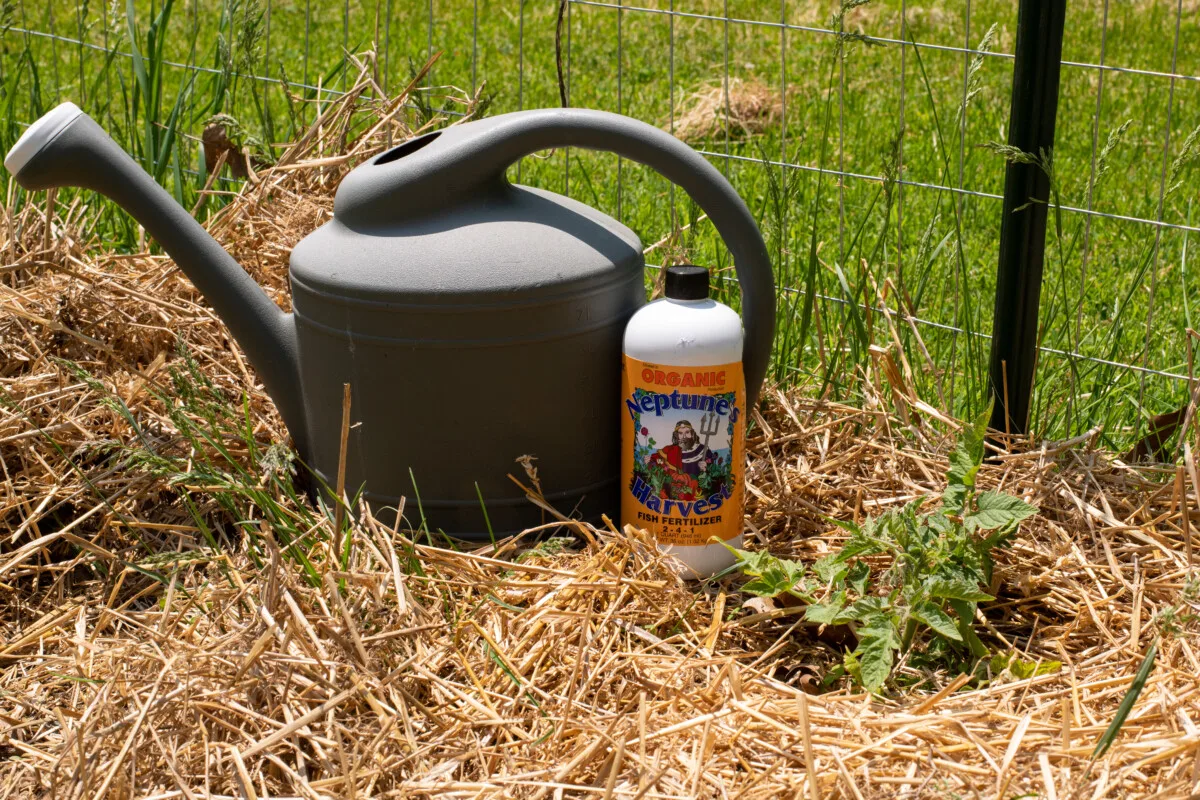
Now, I will warn you that these concentrates need to be mixed with water. And by using a fish emulsion, you miss out on the primary benefit of burying a fish – the smell. Because you’re watering with fish emulsion above the soil, you will smell dead fish each time you use it. But it does dissipate within a day or two.
You run the risk of attracting critters by applying fish emulsion directly to your soil. But you can minimize the smell and risk by hand watering the fertilizer directly at the base of each plant rather than broadly. You can also use a water spike or globe to apply the fertilizer directly to the roots. This cuts down on the smell as well.
And that’s that. Now there’s nothing to do but sit back and wait for your bumper crop. Okay, as gardeners, we all know that’s not true; there’s always something to do in the garden.

Get the famous Rural Sprout newsletter delivered to your inbox.
Including Sunday ramblings from our editor, Tracey, as well as “What’s Up Wednesday” our roundup of what’s in season and new article updates and alerts.

